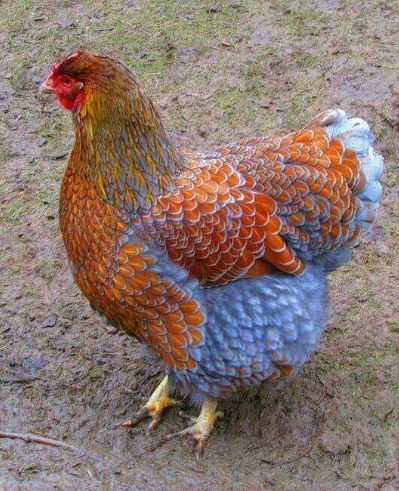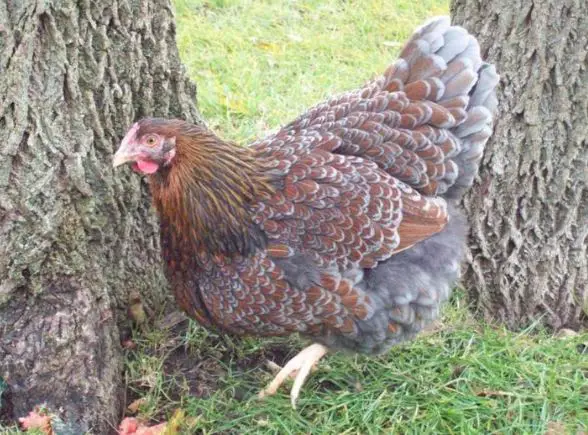Most people agree that Blue Laced Red Wyandottes are the most attractive variety of Wyandotte. If you think this uniquely marked bird is awesome, then read this article.
This article provides background on the Blue Laced Red Wyandotte, describes its personality and egg-laying capacity, and addresses the question of whether or not you should add one to your flock.
You may also want to read about Copper Black Marrans.
History of the Blue Laced Red Wyandottes
According to numerous sources, Mr. Heidenbluth of Frankenburg, Saxony, was the one who first bred Blue Laced Red Wyandottes in the late 1800s.
On the other hand, there seems to be a document that contradicts this, claiming that the Blue-Laced Red Wyandotte was actually developed in the United States.
It appears from this record that many of the Blue Laced Red Wyandottes now residing in the United Kingdom were originally bred in the United States and exported there.
It’s not out of the question to assume that some of the birds brought into the UK made their way to Germany for further breeding and improvement.
After gaining popularity in the 1920s, more than 100 Blue Laced Red Wyandottes were displayed at the 1929 Poultry Show in Leipzig, Germany. In 1929, it was recognized as meeting the German Perfection Standard.
After arriving in England, the German stock eventually made its way back to the United States in the 1980s, all thanks to Lowell Barber.

Disposition and Health
Wyandottes are a friendly and gentle breed of chicken, but they are not very “cuddly.” They are a good addition to any flock of chickens in your backyard.
They can look like they don’t care, but this depends on the bird. They are also known to be “talkative,” though this can be different from one bird to the next.
Most of the time, they are near the top of the pecking order. They don’t put up with nonsense from other hens and don’t seem to be bullies.
They are good mothers and can be prone to nesting. Most of the time, they will hatch any eggs you put under them. If you want to raise your own birds, this is a very useful trait to have.
They don’t mind being locked up, but if they are free to roam, they are good at finding food. About 200 medium to large brown eggs per year are what you can expect from a hen.
In general, the Wyandotte chicken has a low rate of having babies. This has to do with the rosecomb gene, which is why good stock is hard to find.
Other than that, the Wyandotte is just like any other hen when it comes to problems. The thick feathers need to be checked for lice or mites often and treated if they are found.
Sometimes the fur around the bottom can get a little “poopy” and may need to be trimmed. It may also need to be trimmed to help it mate, since all that fur can get in the way.
Should you get them?
Now that you’ve decided you need some Blue Laced Red Wyandottes in your flock, get ready for “sticker shock”: a good quality chick will cost you between $30 and $40 per bird.
Even though they are much cheaper at hatcheries and private breeders, the quality and purity of the strain has sometimes been harmed by sloppy breeding done in a rush to make a lot of chicks and make money.
If you like to show your birds, they will get a lot of attention, but as was already said, they are not yet a recognized variety of the Wyandotte breed.
As more people show off the breed, the APA will notice it more, which could speed up their acceptance. The Blue Laced Red, like most Wyandottes, will do well in a 4H setting because it is calm and steady and can handle a wide range of situations.
They aren’t mean or aggressive, so they get along well with kids, and they would add a lot of color to the family flock. They are a popular breed in the upper Midwest and North Eastern states because they do well in cold weather.
Even though they can handle heat, they need a place to hide in the shade and a lot of cool water. Make sure to use a good waterer.
The Blue Laced Red Wyandotte is not the best free-range chicken because it is not friendly. They like to look for food and are pretty good at it, but because they are so proud, birds of prey can easily catch them.
The Blue Laced Red Wyandotte is a hardy breed that does well in colder climates, just like all other Wyandotte types. Their thick feathers help them deal with cold weather, and their short rose combs are close to their heads, which protects them from frostbite.
Breeders are working hard to get this color variety recognized, and there is a good chance that they will be successful. This color is one of the Wyandotte colors that people want the most.


